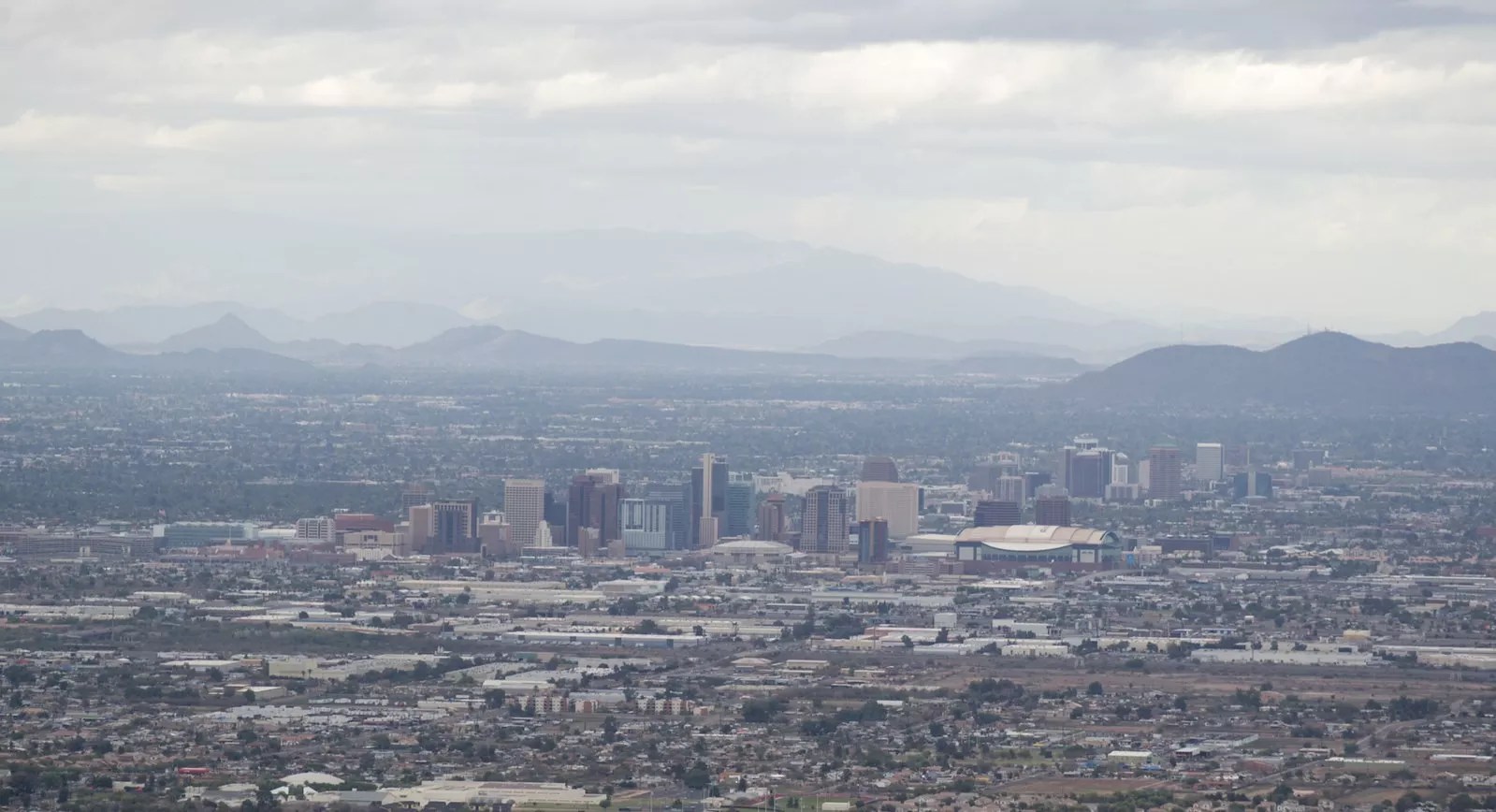
Don Barrett/Flickr

Audio By Carbonatix
Each summer in metro Phoenix, as scorching temperatures climb, so do ozone levels.
For years, the area has ranked as one of the worst in the country for ozone pollution, which can cause respiratory distress, particularly among young children. And this year has been no different: So far in 2021, ozone levels have exceeded federal health standards on 22 days, forcing the state to send out continual health alerts, and putting the Valley on track for a worse year than 2019 and 2020.
Nearly a third of those exceedances are caused by wildfires, said Matthew Pace, a meteorologist with the Arizona Department of Environmental Quality. It’s a sign of how drier, hotter summers may worsen air pollution.
Last summer saw similar trends – though they were at first unexpected. In the spring, when lockdowns shut down the city, an assumed silver lining was a reduction in air pollution from vehicle traffic.
Ground-level ozone is a byproduct of other pollutants; it forms when nitrogen oxides react with volatile organic compounds, or VOCs. Though both chemicals have a variety of sources – including industrial emissions – much of the pollution is caused by vehicles.
So when traffic dropped off dramatically in the spring of 2020 – reducing nitrogen dioxide pollution in the Valley – some were hopeful that ozone levels, too, would dip. But they didn’t; ozone levels exceeded standards on 40 days in 2020, about the same as the year prior.
It’s hard to know why that is. While ground-level ozone levels dropped globally, some studies have shown that, in many regions, declines in nitrogen dioxide did not always yield declines in ozone – and, in some cases, those regions actually saw increases.
“It’s a complex chemical reaction,” Pace said, and something that the state was “continuing to look into.”
One certain factor, though, was last year’s weather. Typically, the winds and storms of monsoon season “mix up” the air in the summer months, Pace said, helping to limit ozone, which forms most easily on sunny days when the air is stagnant. But last year, monsoon season was the driest on record. This year, so far, has not been much better.
Those dry conditions then helped spark one of the worst wildfire seasons on record – which, in turn, also increased ozone. Wildfires can be significant generators of the pollutant; wildfire combustion produces all the needed ingredients – both nitrogen oxides and VOCs. The state estimates that the fires caused ozone levels to jump above federal health standards on 11 days last summer.
But it’s not just conditions in Arizona that impact pollution in Phoenix. Even wildfires in the Pacific Northwest can pollute the Valley’s air. In August and September last year, Pace said, some ozone spikes were likely caused by “smoke wrapping around through Idaho, down into Colorado, and, finally, into Arizona.” And when the Los Angeles basin sees high ozone, winds from the west can “transport” the pollution to Phoenix.
In its 2021 draft climate action plan, the city of Phoenix says it hopes to bring ozone levels down to federal standards, largely through cleaner vehicles, and better public transit.
But with intensifying, unpredictable weather, it’s hard to know the impact of those policies. Pace says he’s still optimistic; after all, the uptick in telecommuting has successfully kept tons of nitrogen oxides out of the air. “Certainly, as cars get cleaner, we should be seeing ozone levels drop,” he said. It just might not be enough to offset the wildfires.